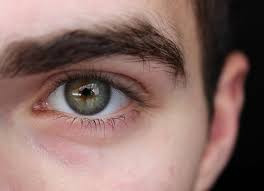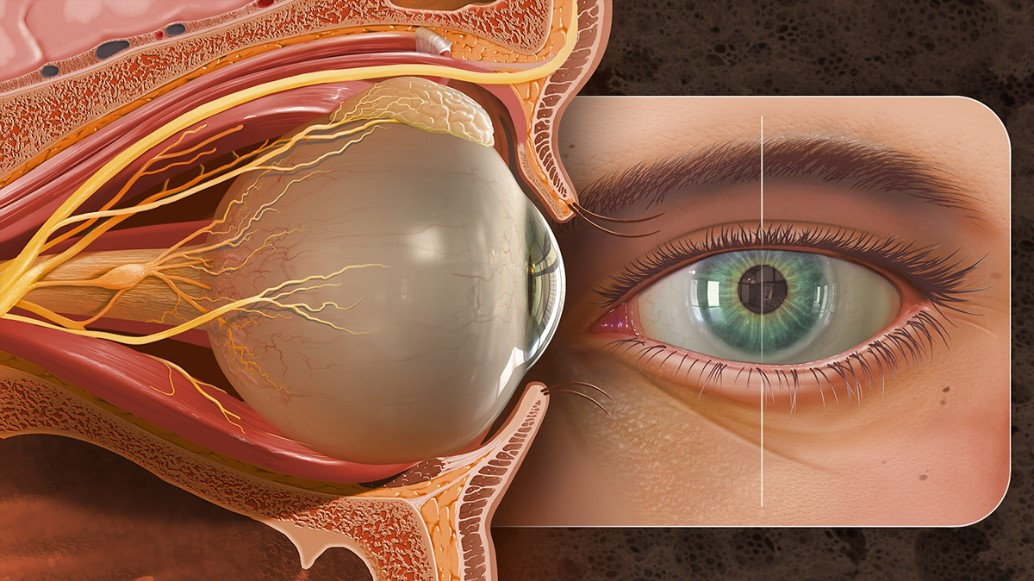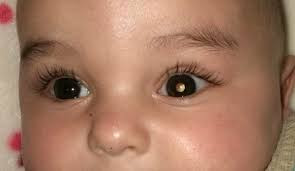Definisi
Tumor iris adalah benjolan/massa yang ditemukan pada iris. Tumor iris merupakan salah satu bentuk kanker mata, dapat bersifat jinak maupun ganas. Tumor iris dapat berifat kistik (seperti kista) dan padat. Sekitar 20% tumor iris bersifat seperti kista dan 80% bersifat padat.
Penyebab
Penyebab terjadinya tumor pada iris mata sampai saat ini masih belum diketahui pastinya. Namun, diduga tumor iris dan tumor pada mata lainnya timbul akibat adanya mutasi genetik pada jaringan mata, terutama gen yang mengatur pertumbuhan.
Faktor Risiko
Beberapa faktor risiko yang diduga dapat meningkatkan risiko terjadinya tumor pada mata yaitu berusia di atas 50 tahun, berkulit putih, memiliki warna mata yang cerah, seperti biru atau hijau, memiliki riwayat kanker di keluarga. Beberapa penelitian menyatakan bahwa paparan zat kimia berbahaya, paparan cahaya matahari atau paparan lampu ultraviolet juga berkaitan dengan munculnya kanker pada mata.
Gejala
Gejala dari kanker mata berbeda-beda, tergantung jenis-jenisnya. Gejala dapat menyerupai gejala dari kondisi atau penyakit mata lain. Terkadang, kanker mata juga bisa tidak menimbulkan gejala apapun pada awalnya. Namun, secara umum, gejala kanker pada mata dapat meliputi:
- Bintik gelap pada iris
- Gangguan penglihatan
- Penyempitan lapang pandang
- Melihat benda-benda berterbangan (floaters), garis-garis, atau bintik-bintik
- Melihat kilatan-kilatan cahaya
- Perubahan ukuran dan bentuk pupil
- Strabismus atau juling
- Salah satu mata terlihat menonjol
- Mata nyeri
- Mata merah atau iritasi
Diagnosis
Diagnosis tumor iris dapat ditegakkan melalui wawancara mendalam (anamnesis) mengenai keluhan dan gejala yang dialami pasien termasuk sejak kapan gejala muncul dan apa saja yang dapat memicu atau meredakan gejala, serta riwayat kesehatan pasien secara umum. Kemudian dapat dilakukan pemeriksaan fisik seperti tes ketajaman mata, lapang pandang, gerak bola mata. Pemeriksaan mata dilakukan dengan bantuan alat seperti oftalmoskop, slit lamp dan gonioskopi lensa untuk melihat kondisi mata. Pemeriksaan ini bertujuan untuk mengetahui kemampuan penglihatan mata, pergerakan bola mata dan kondisi pembuluh darah mata. Jika hasil pemeriksaan menunjukkan adanya kemungkinan terjadi tumor atau kanker pada mata, beberapa pemeriksaan dapat dilakukan untuk memastikan diagnosisnya seperti pemeriksaan USG mata, CT scan dan MRI untuk mengetahui lokasi dan ukuran sel tumor, biopsi untuk mengambil sampel jaringan mata yang diduga mengalami kelainan guna diperiksa di laboraturium.
Tata Laksana
Peluang kesembuhan tumor iris tergantung pada ukuran tumor, tingkat keparahan kondisi, dan luas serta bagian mata yang mengalami kelainan. Pada beberapa pasien, kekambuhan juga dapat terjadi setelah dilakukan pengobatan dan dinyatakan sembuh. Pengobatan dari berbagai penyakit kanker mata ini bertujuan mempertahankan fungsi mata, mencegah terjadinya penyebaran sel kanker ke bagian tubuh lain dan mencegah kekambuhan setelah pengobatan. Beberapa tindakan yang dapat dilakukan seperti operasi. Jenis operasi yang dilakukan tergantung pada lokasi dan ukuran jaringan tumor yang ada. Saat dilakukan operasi, pasien biasanya diberikan bius total. Pada kasus tumor iris, dapat dilakukan tindakan sebagai berikut :
- Iridektomi yaitu pengangkatan bagian dari iris mata, biasanya pada kasus tumor yang berukuran kecil dan pada tumor iris yang bersifat ganas.
- Iridotrabulektomi yaitu pengangkatan bagian dari iris beserta sedikit bagian luar bola mata.
- Iridosikletomi yaitu pengangkatan bagian iris beserta sebagian badan siliaris.
- Enukleasi yaitu pengangkatan seluruh bola mata, biasanya pada kasus tumor yang berukuran besar atau pada pasien yang sudah kehilangan penglihatan.
- Eksenterasi mata yaitu pengangkatan bola mata dan beberapa bagian lain disekitarnya, seperti kelopak mata, otot, saraf, dan jaringan lain di rongga mata.
Radioterapi merupakan pengobatan yang dilakukan dengan menembakkan sinar X berenergi tinggi pada jaringan tumor. Dengan radioterapi, risiko kehilangan atau kerusakkan bola mata serta kehilangan penglihatan dapat dikurangi. Terapi laser berfungsi untuk menghancurkan jaringan kanker menggunakan sinar laser. Selanjutnya kemoterapi merupakan metode pengobatan kanker mata dengan menggunakan obat-obatan kimia. Kemoterapi dapat disuntikkan langsung ke daerah mata (intraokular), ke dalam cairan serebrospinal ataupun diberikan melalui infus. Jika obat-obatan kemoterapi tidak efektif, dapat diberikan obat imunoterapi dan obat terapi target. Kemudian yang terakhir dapat dilakukan krioterapi yaitu metode pengobatan kanker mata dengan cara membekukan jaringan kanker.
Komplikasi
Komplikasi yang dapat terjadi yaitu kehilangan penglihatan atau buta, glaukoma, dan penyebaran sel kanker ke bagian tubuh lain (metastasis).
Pencegahan
Sebagian besar tumor pada mata penyebabnya masih belum diketahui, sehingga sulit untuk melakukan pencegahan timbulnya tumor/kanker mata. Cara terbaik yang dapat dilakukan adalah dengan melakukan pemeriksaan sejak dini sejak anak-anak terutama apabila terdapat riwayat penyakit serupa di keluarga dan apabila timbul gejala pada mata. Pemeriksaan harus dilakukan secara rutin.
Kapan Harus ke Dokter?
Baik tumor iris ataupun jenis kanker mata lainnya bersifat tidak spesifik dan dapat menyerupai gejala dari kondisi atau penyakit mata lainnya, sehingga disarankan untuk melakukan pemeriksaan ke dokter jika mengalami gejala-gejala seperti yang telah dijelaskan, terutama jika gejala tidak kunjung mereda setelah 2 minggu. Pemeriksaan rutin ke dokter mata sangat dianjurkan jika memiliki faktor-faktor yang dapat meningkatkan risiko terkena kanker mata. Pemeriksaan sebaiknya dilakukan setahun sekali agar kanker dapat dideteksi sedini mungkin.
Mau tahu informasi seputar penyakit lainnya? Cek di sini, ya!
- dr Ayu Munawaroh, MKK
Maheshwari, A., & Finger, P.T. (2018). Cancers of the eye. Cancer Metastasis Rev 37, pp. 677–690.
American Cancer Society (2018). Cancer A-Z. Eye Cancer.
Boyd, K. American Academy of Ophthalmology (2020). Eye Health A-Z. Eye Cancer.
University of Rochester Medical Center (2020). Encyclopedia. Eye Cancer: Introduction.
Cancer.Net (2015). Types of Cancer. Eye Cancer.











